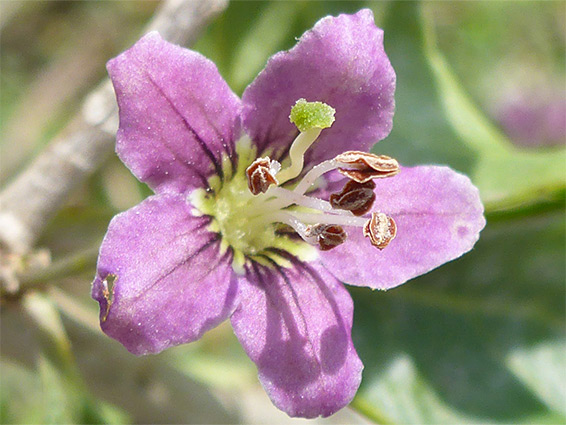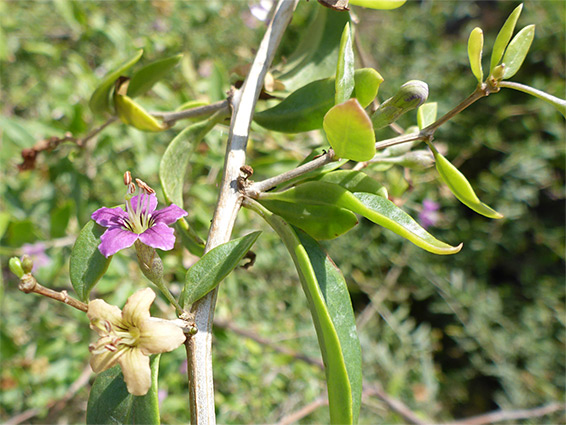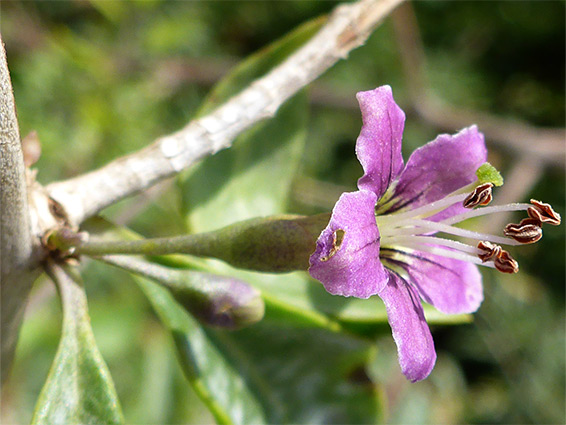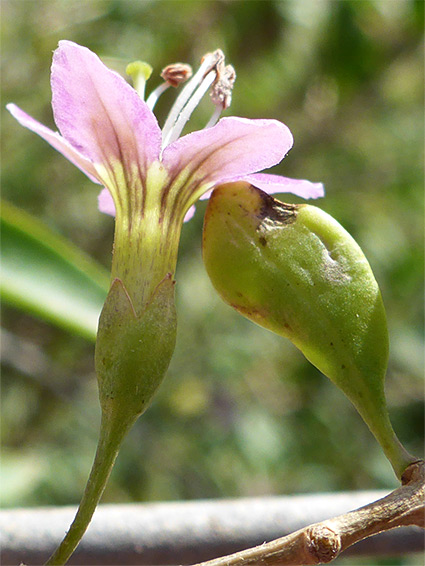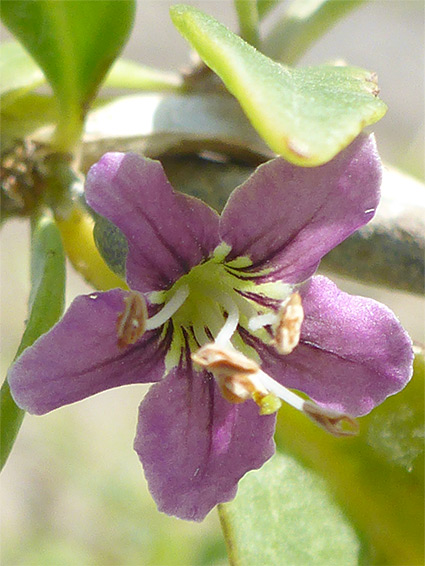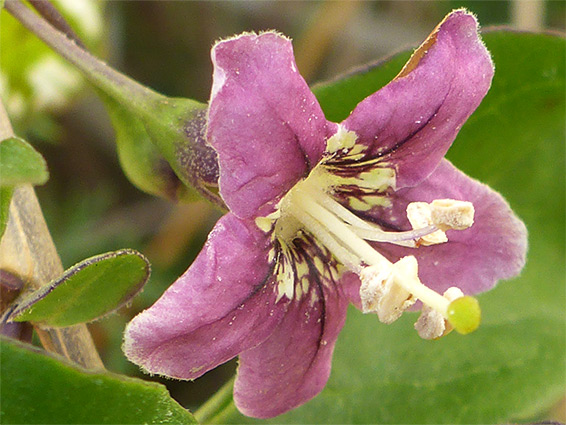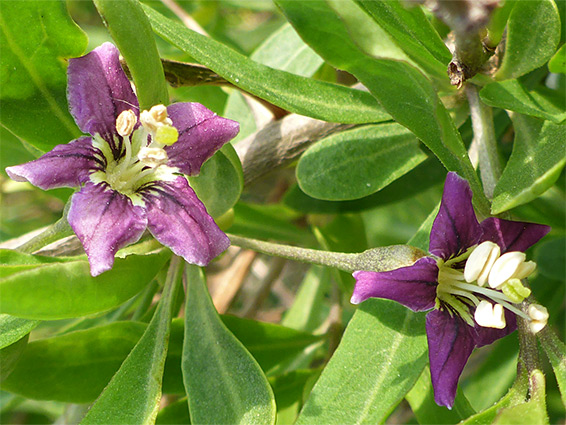The common name of lycium barbarum, a woody shrub, refers to the 3rd Duke of Argyll, a plant collector, who first brought this species to the UK (in the 1730s, from China), under the impression it was a species of tea.
Common name:
Duke of argyll's-teaplant
Family:
Scientific name:
Lycium barbarum
Main flower color:
Range:
England and Wales
Height:
Up to 250 cm
Habitat:
Disturbed ground, pathways, hedgerows, often coastal; an introduced species, though long naturalised
Flowers:
A hairless, cup-shaped calyx with five triangular lobes, and a yellowish, tubular corolla with five, spreading, dark pink lobes. Protruding from the corolla tube are five stamens, with white filaments and orange-brown anthers, and a pistil topped by a green stigma. Flowers form singly or in groups of two or three, from the leaf nodes
Leaves:
Hairless, grey-green, alternate, lanceolate, on woody, branched, greyish-white stems. Up to 6 cm long
Season:
June to September
Rarity:
★★★★★

